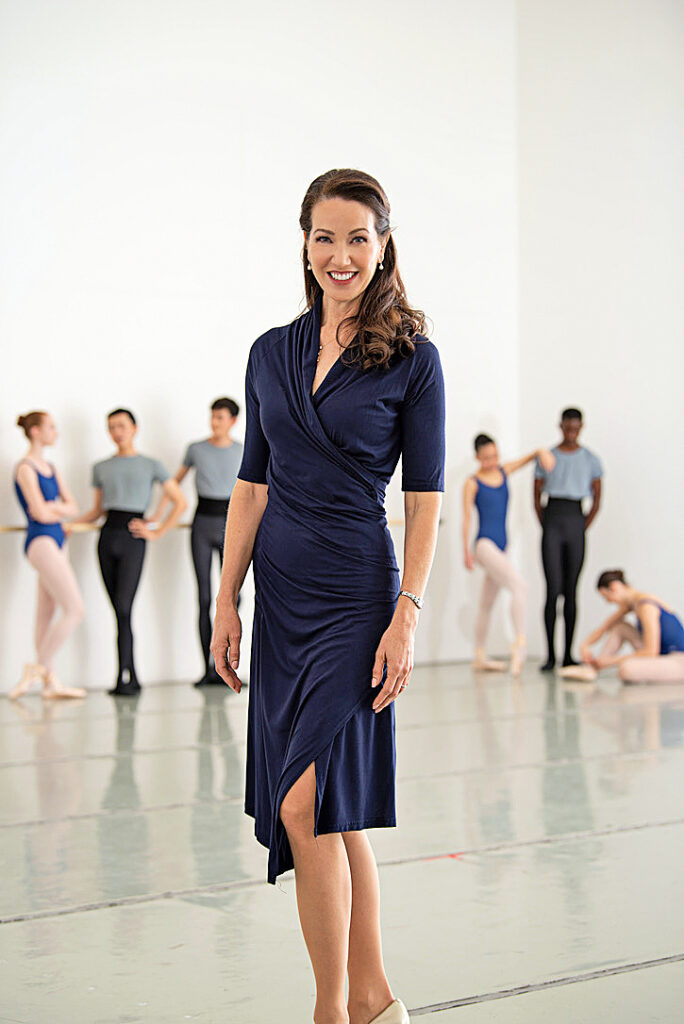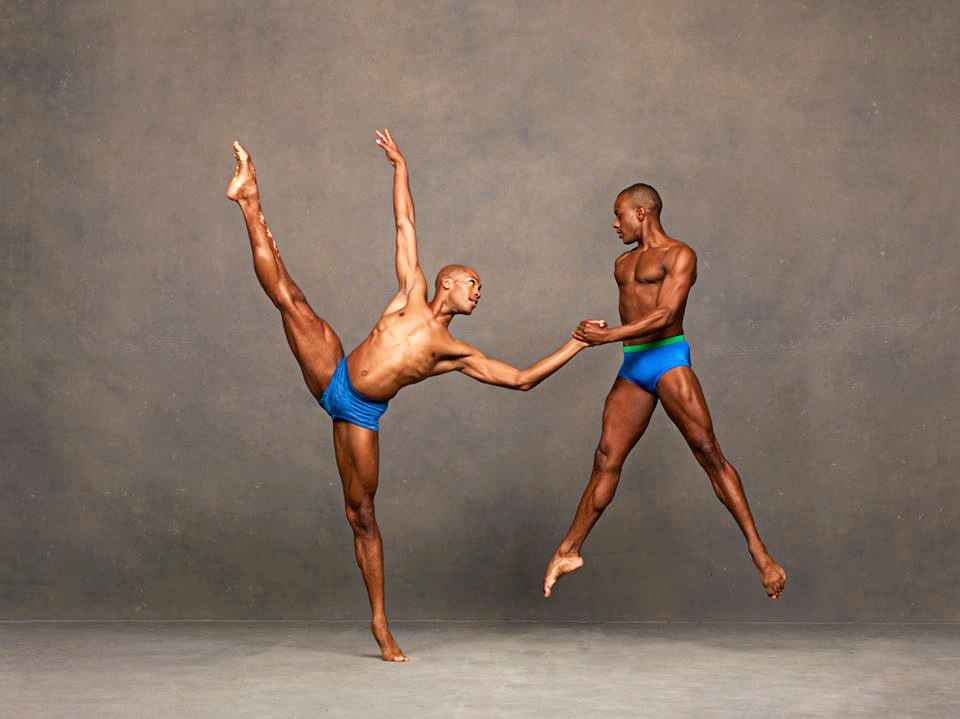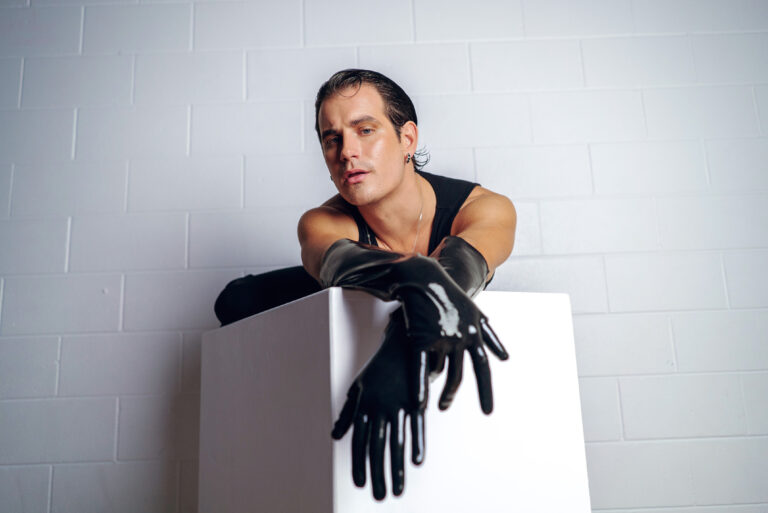
Hubbard Street Dance Chicago’s Jacqueline Burnett was 22 when she met her future husband, David Schultz. It was her first season in the company; Schultz had just joined Hubbard Street 2.
“I swept her off her feet,” Schultz says.
“That’s not true,” says Burnett, laughing.
Over time, the two young dancers became friends and eventually started dating.
Because dancers share a lifestyle, an intense schedule and priorities that nondancers don’t always understand, it’s not uncommon for them to date one another.
Psychologist Dr. Elizabeth Hutter, who is also school principal of New Ballet in San Jose, California, and president of the American Psychological Association’s section on performance psychology, says she’s witnessed dancer couples of all ages who credit their relationship as adding to career fulfillment. “Often the respect and caring a couple can share with each other can spread a very positive comaraderie among others,” she says.

But while dancing with a romantic partner can enhance self-esteem and confidence in the studio and on the stage, what happens if things don’t always go according to plan? How does that impact mental focus or partnering dynamics among students? And how can dance educators be better prepared to address and tactfully handle these situations calmly and confidently?
Dealing With the Emotional Roller Coaster
Being in love can result in positive performance factors. Hutter says “feel-good chemicals (neurotransmitters and hormones)” released when a person is in love puts an extra spring in your step by speeding up the mind–body connection as action potentials from the brain are sent more quickly across synaptic clefts, making people feel not just happier but more alert. “Your awareness is heightened,” she says. “When you’re able to transfer that to your work, it’s a win-win.”
“However,” Schultz says, “we have seen plenty of couples break up and how toxic and terrible that is for everyone in the room.” Hutter notes: “It can be tough to have to work with someone you’re trying to ‘get over,’ ” adding that it can sometimes be hard for previously involved dancers to partner together, or dance in roles involving the dramatization of a relationship.
However, Hutter says dance itself can be a salve for a broken heart. “Getting back to dance, going to the music, going to the choreography, going through the routines of your barre work; sometimes that is one of the best things to help people get through a difficult time.”
Setting Boundaries
Burnett and Schultz put boundaries in place even before they started dating. Burnett says when they’re disagreeing about something, she and Schultz agree to leave it at the studio door.
“We just don’t bring it to work,” Burnett says, admitting their approach sounds “old-school.”
“We’re from the generation where you don’t bring everything into the room,” she says. “You can’t solve your issue while you’re working. Whatever was bugging you is going to be there when you get home.”
Whether or not Burnett and Schultz’s approach is old-school, research indicates that teens today tend to be savvier in terms of gender identity and expression.
“There’s so much more fluidity now,” says Alexandra James, director of training programs for the Bates Dance Festival (BDF) in Lewiston, Maine, which hosts two residential summer intensives, including a two-week program for dancers ages 14 to 18. “I see a lot more open physical affection than I experienced when I was younger,” James says, “which speaks to this generational shift in terms of how comfortable folks feel to be more open and expressive with platonic love.”

Like James, Antonio and Kirven Douthit-Boyd of the Center for Creative Arts (COCA) in St. Louis, Missouri, also observe young dancers demonstrating more confidence and comfort with expressing a spectrum of gender and sexual identities. But they haven’t noticed much dating going on. “We see [students] from 4:30 to 9 pm,” Antonio says. “Because it’s such a condensed period of time, they’re in class nonstop.”
The Douthit-Boyds met in New York City in their 20s as dancers for Alvin Ailey American Dance Theater. They say the company was very supportive of their relationship, but it wasn’t exactly love at first sight. “I just thought he was so cocky,” Antonio says of Kirven with a smile, “and he was so talented.”
Though slow to warm, Antonio made the first move, asking Kirven on a coffee date. “I could see him let his guard down,” Antonio says. “He spilled hot chocolate all over his pants because he was so nervous. I thought, ‘That’s the one.’”
The couple married in 2013, eight years into their relationship.
“It wasn’t always easy,” says Kirven, who currently serves as artistic director of the Big Muddy Dance Company in addition to teaching at COCA. “You have to want to grow individually but also celebrate someone else’s trajectory. Those things might not always align, but you’ll find time for them to come together.”

Combining Love and Logic
James explains that burgeoning relationships—platonic or not—can enhance the BDF experience. But she also notes high rates of anxiety among this generation of teens. “When folks become attached or start a flirtation, it can cause a lot of distress if things in that blooming relationship don’t go well,” she says. “Sometimes a budding relationship is a beautiful anchor and sometimes it exacerbates an underlying issue.”
While James admits the approach of embracing the whole dancer when teaching in this situation can be messy, Hutter says it can yield positive performance results. “If the teacher teaches the student and not just the steps, you get a better dancer,” says Hutter. “You get decreased injury, increased longevity, decreased burnout, better attendance and better focus. You cannot isolate the technique in the absence of nurturing a student.”
James says BDF has no explicit rules about dancers dating one another. However, intimate relationships between staff and students are not permitted, regardless of age. A team of mentors (adults who live in the dorms with the students and essentially function like camp counselors) help ensure that healthy boundaries are maintained. “There’s a safety issue, too,” James says. “Our mentors are not therapists. They’re not medical professionals. We’re also not going to provide sex education for students.”
The mentorship team is trained to address minor incidents, such as panic attacks, and participates in daily classes to provide a continuous source of support in the studio and outside. BDF also has a long-standing relationship with a local therapist if a student faces distress beyond what the staff can or should handle.
“If you’re lucky enough to work in a company or train in a school that has a mental health professional on staff, great,” says Hutter, who also leads the wellness team at New Ballet. “It’s wise to utilize that support to process stages of feelings in a protected and therapeutic space. That can be before a relationship starts, after it ends, or different steps you’re considering taking in it.”

Hutter also emphasizes that teenagers’ relationships are not to be trivialized. “These young hearts have strong feelings as well as strong vulnerabilities regardless of age,” she says. “Teachers should have that awareness and respect. Relationships are an opportunity to develop maturity, communication skills, boundaries and professionalization skills.”
Still, Hutter says teachers also need to be cautious about overstepping boundaries. She suggests referencing evidence-based resources, such as Dance/USA’s informational papers, and also recommends avoiding direct questions about students’ romantic lives, focusing instead on behavior changes and discreetly checking in as needed.
“Show some support; you don’t have to pry,” she says. “Show some compassion like you would for any other issue. The responsibility is to nurture a child. That doesn’t mean having all the answers.”




